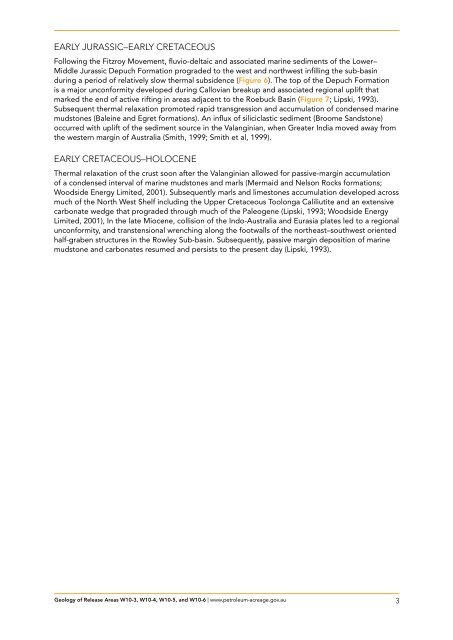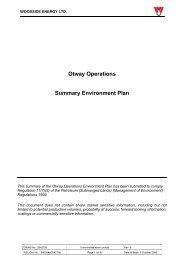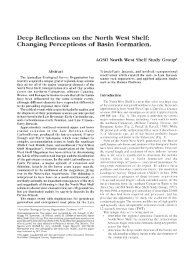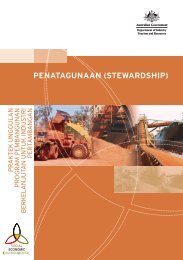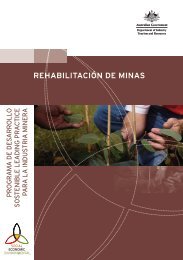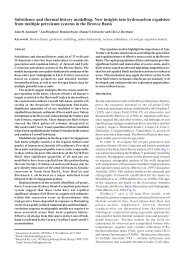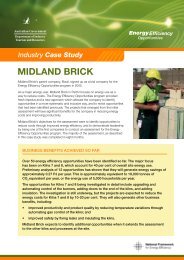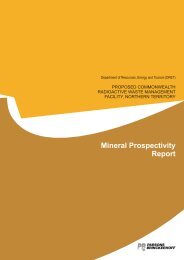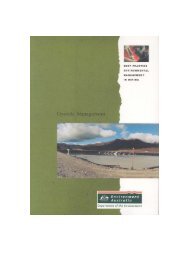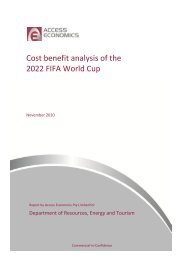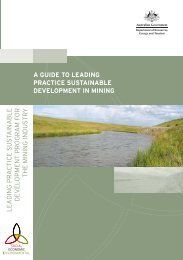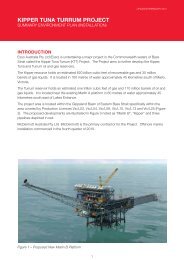Rowley Sub-basin, Roebuck Basin, Release Areas W10-3, W10-4 ...
Rowley Sub-basin, Roebuck Basin, Release Areas W10-3, W10-4 ...
Rowley Sub-basin, Roebuck Basin, Release Areas W10-3, W10-4 ...
Create successful ePaper yourself
Turn your PDF publications into a flip-book with our unique Google optimized e-Paper software.
earLy JurassiC–earLy CretaCeous<br />
following the fitzroy movement, fluvio-deltaic and associated marine sediments of the lower–<br />
middle Jurassic depuch formation prograded to the west and northwest infilling the sub-<strong>basin</strong><br />
during a period of relatively slow thermal subsidence (Figure 6). the top of the depuch formation<br />
is a major unconformity developed during callovian breakup and associated regional uplift that<br />
marked the end of active rifting in areas adjacent to the <strong>Roebuck</strong> <strong>basin</strong> (Figure 7; lipski, 1993).<br />
subsequent thermal relaxation promoted rapid transgression and accumulation of condensed marine<br />
mudstones (baleine and Egret formations). An influx of siliciclastic sediment (broome sandstone)<br />
occurred with uplift of the sediment source in the Valanginian, when Greater india moved away from<br />
the western margin of Australia (smith, 1999; smith et al, 1999).<br />
earLy CretaCeous–HoLoCene<br />
thermal relaxation of the crust soon after the Valanginian allowed for passive-margin accumulation<br />
of a condensed interval of marine mudstones and marls (mermaid and nelson Rocks formations;<br />
Woodside Energy limited, 2001). subsequently marls and limestones accumulation developed across<br />
much of the north West shelf including the upper cretaceous toolonga caliliutite and an extensive<br />
carbonate wedge that prograded through much of the Paleogene (lipski, 1993; Woodside Energy<br />
limited, 2001), in the late miocene, collision of the indo-Australia and Eurasia plates led to a regional<br />
unconformity, and transtensional wrenching along the footwalls of the northeast–southwest oriented<br />
half-graben structures in the <strong>Rowley</strong> sub-<strong>basin</strong>. subsequently, passive margin deposition of marine<br />
mudstone and carbonates resumed and persists to the present day (lipski, 1993).<br />
Geology of <strong>Release</strong> <strong>Areas</strong> <strong>W10</strong>-3, <strong>W10</strong>-4, <strong>W10</strong>-5, and <strong>W10</strong>-6 | www.petroleum-acreage.gov.au 3


